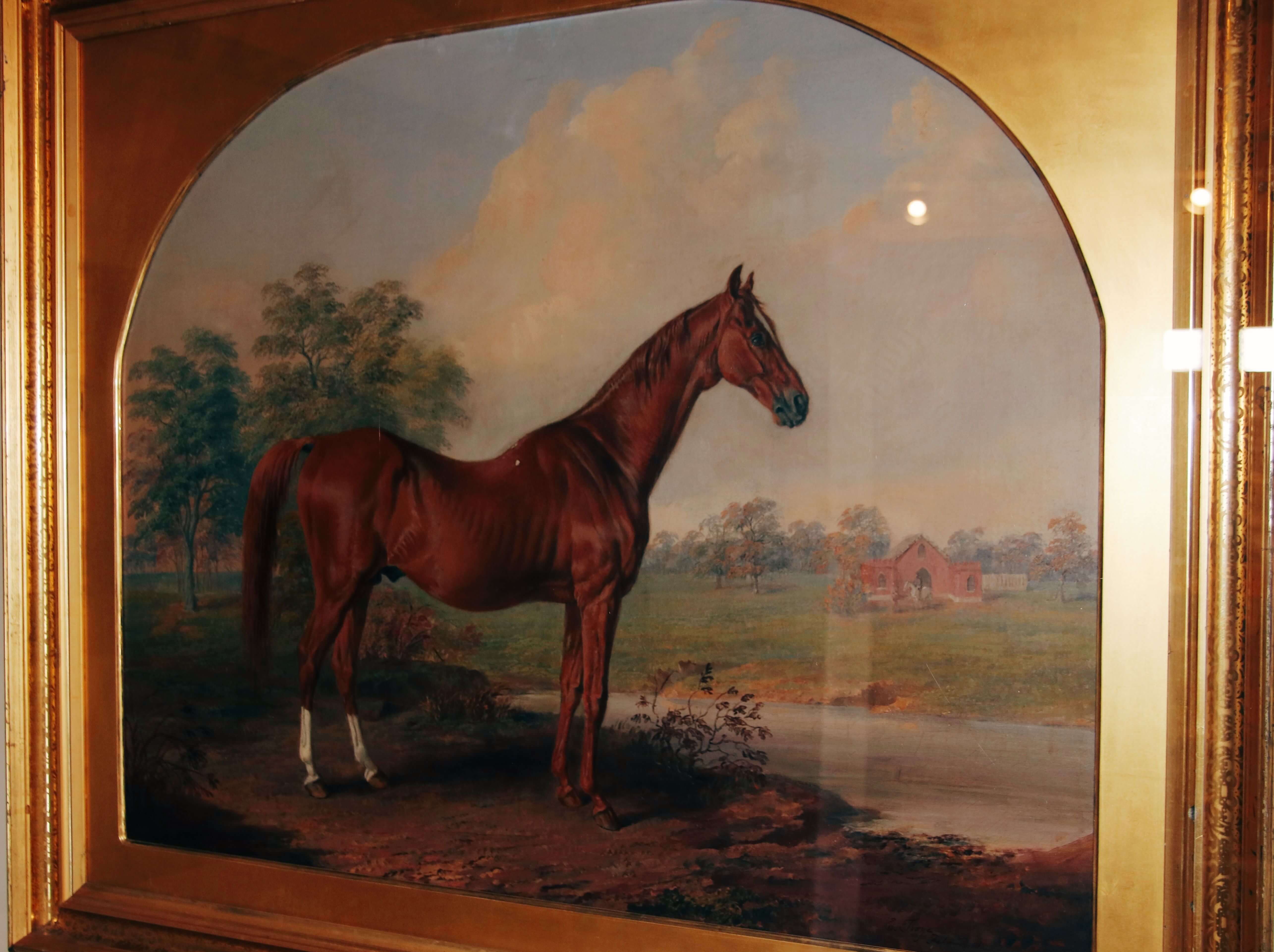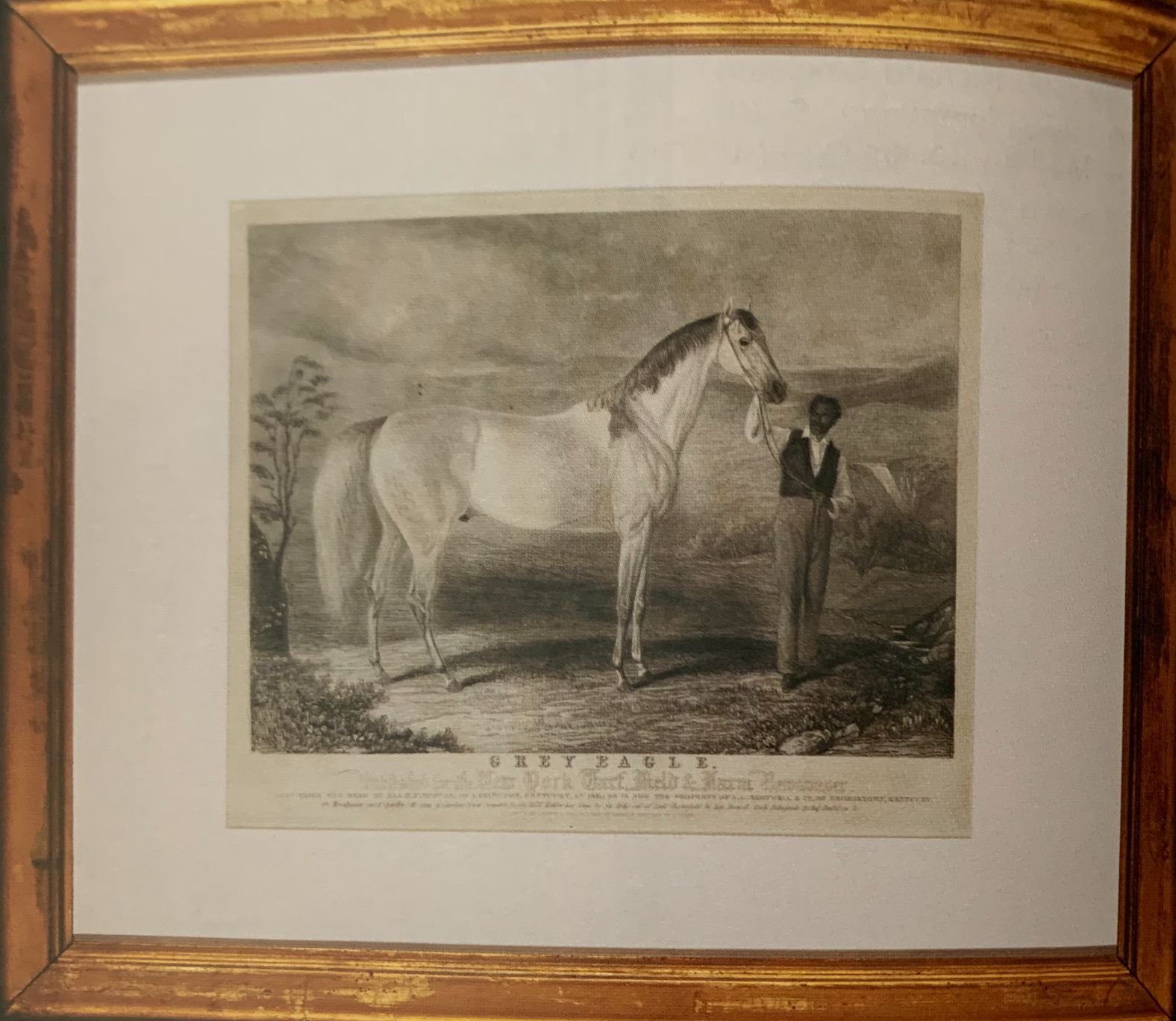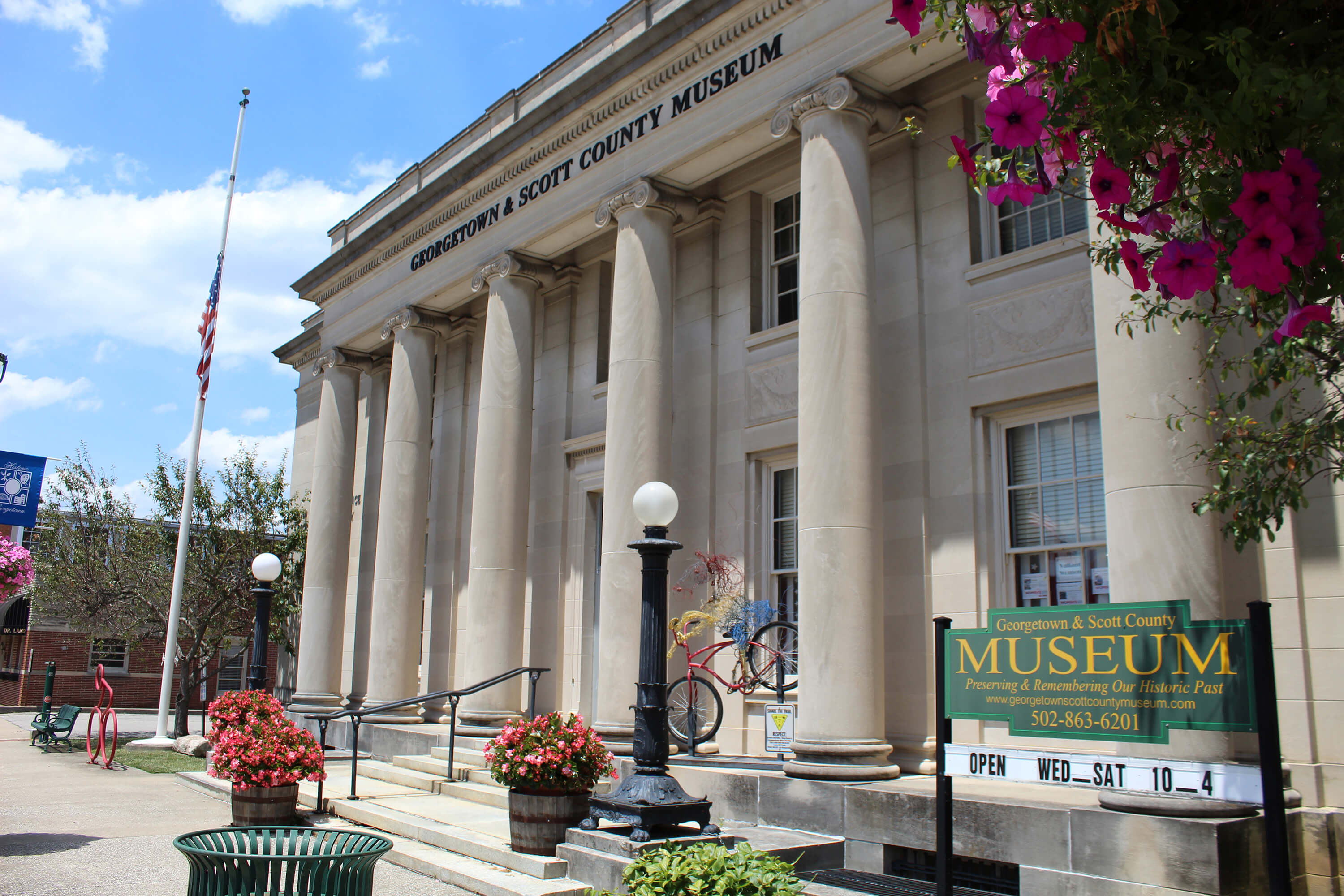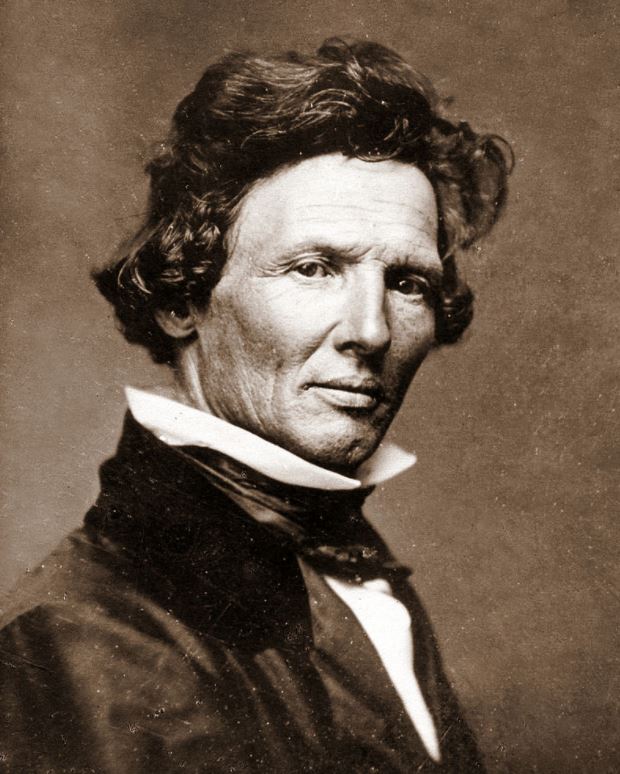
I came, I saw, I painted. Who Am I?
By: Kathy Witt
I was born the same year as Jefferson Davis, but across the pond in Lausanne, Switzerland. I didn’t arrive in Kentucky until the 1830s.
Not to brag, but I’m nineteenth-century North America’s first important portrait and landscape painter.
I’m also considered to be the most noted painter of horses during the height of American horseracing during the same century – and I rose to fame right here in Georgetown.
During my lifetime, I painted nearly every distinguished horse in American flat and harness racing, including Lexington.
My patrons appreciated my attention to horses’ coloring and conformation (balance, structural correctness, tracking, muscling and breed or type).
One of my chief patrons was Georgetownian A. Keene Richards, a lifelong student of horse breeding and pedigrees and noted breeder of thoroughbreds.
I was considered handsome, and a very good catch.
I married my wife, Cornelia Ann Van der Graff, at the Scott County home of her parents. Incidentally, my wife (also a good catch) was the granddaughter of Willem Jacob van de Graaf, the 35th Dutch Governor of Ceylon (present day Sri Lanka) during its Dutch period.
Who am I?
If you guessed Edward Troye, you’d be correct. Born in 1808, Troye lost his mother as an infant and was raised by his father in England where he was also educated. He first arrived in the United States (Philadelphia) in 1830 and began his career as a painter of horses in 1832. With his artistry preceding the age of photography, Troye’s paintings provide a visual record of the horse world’s early foundation sires and mares.

Troye’s legacy lives on in Georgetown, home to two equestrian artists (both famous in their own right) and their galleries: John Stephen Hockensmith of Hockensmith Fine Art Editions, featuring specialty equine art, and Robert Clark, whose namesake gallery focuses on one-of-a-kind equestrian drawings and paintings.
“All conformation photographers owe a debt of gratitude for the way Troye incorporated landscape and conformation into artwork,” said Hockensmith, who considers himself more of a pastoral photographer. “For any Scott County photographer, present or past, we all need to recognize how we work together and what influences we have on one another, and certainly Edward Troye is at the top of the family tree in Scott County.”

To see two examples of Troye’s work, plan a visit to the Georgetown & Scott County Museum. On display: “Grey Eagle,” a print from Troye’s 1841 painting of the record-setting gray horse that raced only in Kentucky, and “Glencoe,” called “the best horse in the world” in 1834 in a London Sporting Magazine article. (Call 502-863-6201 or visit the museum’s Facebook page to check the reopening date.)
Author: Kathryn Witt
Kathryn Witt is an award-winning travel and lifestyle writer, syndicated columnist and author of several books, including Secret Cincinnati, The Secret of the Belles and Atlanta Georgia: A Photographic Portrait. A member of SATW, Authors Guild and the Society of Children’s Books & Illustrators, she lives in northern Kentucky.



